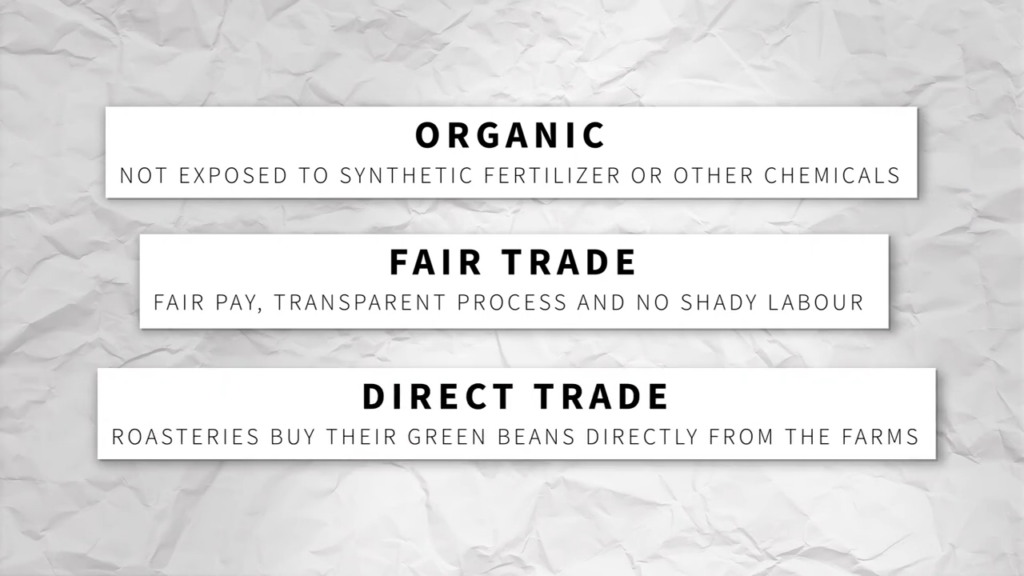Walking into a café and selecting a bag of coffee beans can often feel overwhelming. With rows of colorful bags and various tasting notes, it’s easy to pick a bag based on someone else’s preferences. This guide aims to equip you with the knowledge to make your own educated decisions when choosing coffee beans.
Roasted On Date
Every bag of coffee beans should have a roasted-on date. This is crucial because coffee beans have a specific lifespan and taste best within a particular window. From personal experience, beans taste the best between two days and one month after roasting. Before two days, coffee is too fresh to brew. After a month, it starts losing its freshness. Always look for this date to ensure you get the best quality beans.
If the bean is a light roast, I have found it to still brew a delish cup 1-3 months from its roast date.
Flavor Notes
Flavor notes can come in various forms such as descriptions, pie graphs, or visual graphics. These notes are subjective and reflect the roaster’s opinion based on their tasting sessions. It’s important to understand that flavor notes can shape your expectations. Instead of chasing specific flavors like apricot or blackberry, use them as a general guideline. Think of them as hints rather than strict flavors you must taste.
Origin

The origin of coffee beans plays a significant role in their flavor profile. Different regions have characteristic flavors:
- Ethiopia: Light, fruity, and tea-like.
- Kenya: Juicy.
- Asia: Bold, earthy, and herbal.
- Central America: Balanced, acidic, and bright.
- South America: Spicy, rich, and clean.
- Africa: Fruity, floral, and delicate.
As you taste more beans, you’ll develop a preference for certain origins. For instance, if you like light and fruity coffees, Ethiopian beans might be your best bet.
Meters Above Sea Level (MASL)

MASL refers to the elevation at which the beans were grown. Higher elevation beans are denser and take longer to fruit, resulting in more complex flavors. Dense beans also create fewer fines and require more energy for extraction. When you see a high MASL on the bag, expect a more refined and complex coffee experience.
Blends vs. Single Origins
A blend contains beans from two or more origins to create a balanced and consistent flavor profile. This doesn’t make them inferior; blends aim to combine strengths from different beans. A single origin, on the other hand, focuses on the unique flavors of a specific region. Both can produce excellent coffee, but blends offer a more well-rounded flavor, while single origins provide a distinct taste of their origin.
Processing Methods
Processing methods greatly impact the final flavor of the beans. The three common methods are:
- Natural: Coffee cherries are sun-dried, which allows the bean to absorb flavors from the cherry. This method has the highest potential for intense flavors but is less consistent.
- Washed: The cherry is removed, and the beans are washed, resulting in a cleaner and more consistent taste.
- Honey: A middle ground between natural and washed, where part of the cherry remains on the bean. This method offers balanced flavors.
Understanding these methods will help you predict the flavor profile of your coffee.
Varietals

Coffee varietals can be compared to apple varieties like Gala, Fuji, or Granny Smith. The main categories are Arabica and Robusta. Arabica beans are used in specialty coffees due to their flavor and quality, while Robusta beans have more caffeine but are considered lower in quality. Exploring different varietals can lead to diverse and exciting coffee experiences.
Filter Beans vs. Espresso Beans

Labels such as “filter beans” or “espresso beans” are recommendations from the roaster based on their tasting. However, these beans can often be used interchangeably. For example, espresso beans can be used in a filter brewing method and vice versa. Don’t hesitate to experiment and discover what works best for you.
Roastery Influence
Different roasting regions have distinct preferences:
- Scandinavian: Light roasts, acidic, and delicate.

- Japan: Dark roasts with chocolatey and caramelly notes.

Selecting beans from regions that specialize in your preferred roast style can ensure a better coffee experience.
Special Tags and Certifications

When you see tags like organic, fair trade, or direct trade, they refer to specific growing, trading, or processing standards:
- Organic: No synthetic fertilizers or chemicals.
- Fair Trade: Fair compensation and transparency in the supply chain.
- Direct Trade: Roasteries buy beans directly from the farmers.
These certifications often indicate higher quality and ethical standards.
Building a Personal Bean Database
Create your mini database to track your preferences. When you brew with a bag of beans, note whether you like it or not. Take photos and jot down your thoughts. Over time, you’ll notice patterns in origin, processing methods, or flavor notes. This helps you make better future choices and avoid beans you don’t enjoy.
Utilizing Information to Make Educated Choices
To make informed choices, consider the following key points:
- Roasted Date: Ensure freshness.
- Flavor Notes: Use as a general guideline.
- Origin: Understand regional characteristics.
- MASL: Higher elevation often means more complex flavors.
- Processing Methods: Know the impact on flavor.
- Varietals: Explore Arabica and Robusta categories.
- Roastery Influence: Choose according to your flavor preferences.
- Tags and Certifications: Look for quality and ethical indicators.
By applying this knowledge, you now have a better understanding of how you should pick a bag of coffee instead of going by “this one looks nice”!
